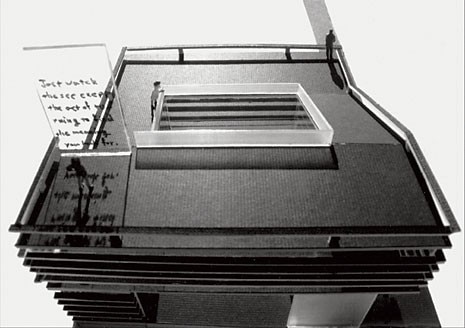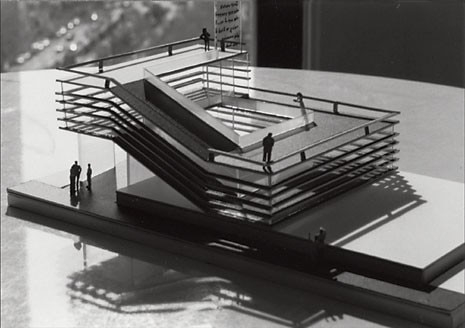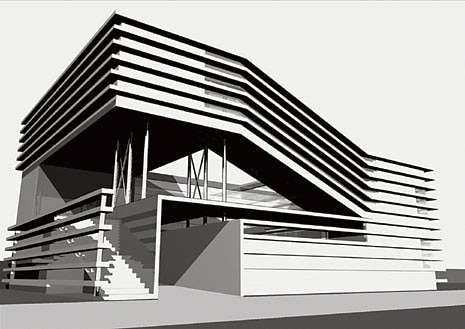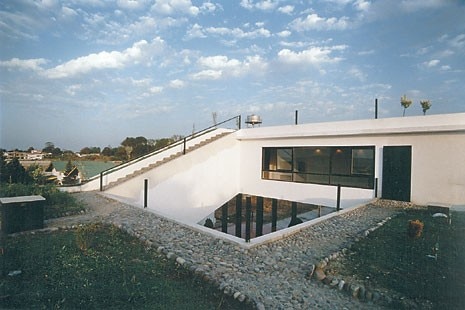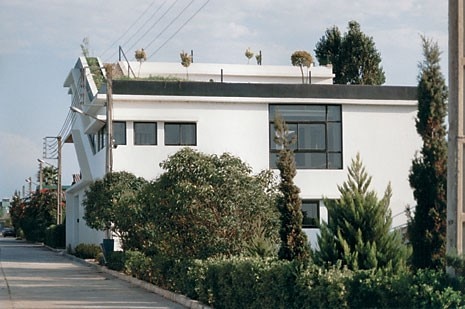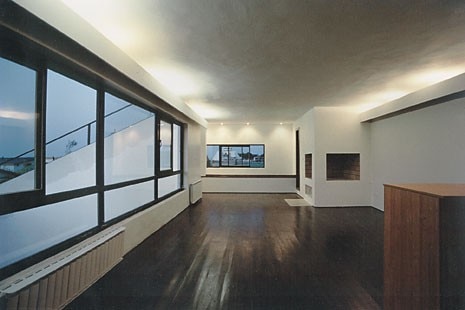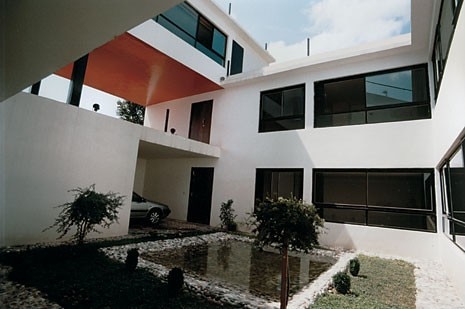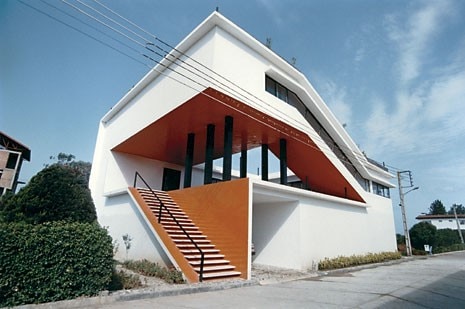So if it is true that (at least according to Freud's interpretation of dreams) every house represents a person, usually with autobiographical traits, we ought to imagine the architect Pouya Khazaeli Parsa – and probably also his client Tahmineh Darvish – as citizens of a difficult Middle Eastern republic torn between East and West, modernisation and conservation, hawks and doves, laissez-faire and building programme. In a context that you sense is disorderly and haphazard, architect and client have sought to recreate a housing structure with slender means and honest design intentions that would, at least in part, indicate their western modernist vocation as opposed to the muddle of ideas and forms that folklore attributes to such places.
Having banned all fake references to Islam, Pouya Khazaeli Parsa (who also worked with Shigeru Ban for a while on the studio on the roof of the Centre Pompidou) focused on a difficult spatial variation of Le Corbusier's "Poem of the right angle". The crucial and original design idea stemmed from the desire to resolve a functional need of disarming simplicity: to allow those living in the house to enjoy the mystery of the Caspian Sea (maybe a sea, maybe a lake) which is blocked from the view of those in the surreal overdevelopment of the tourist resort of Daryacheh. Aided probably by his experience as a sculptor, Pouya Khazaeli Parsa sent the building soaring towards the sky and marked it with an aerial ramp. This element cuts into the closed mass of the walled box and creates a first-floor terrace that is open on the outside and ends at the true roof garden, which offers a charming panorama that stretches out towards the beach.
Far removed from the obsession with ribbon constructions that fills so many S,M,L,XL building competitions, its physiognomy represents the schizophrenic split of the contemporary designer – who aspires, on the one hand, to the order required of every structure but is, on the other, swept away by expression requirements into the whorls of thought and the constructed form.
